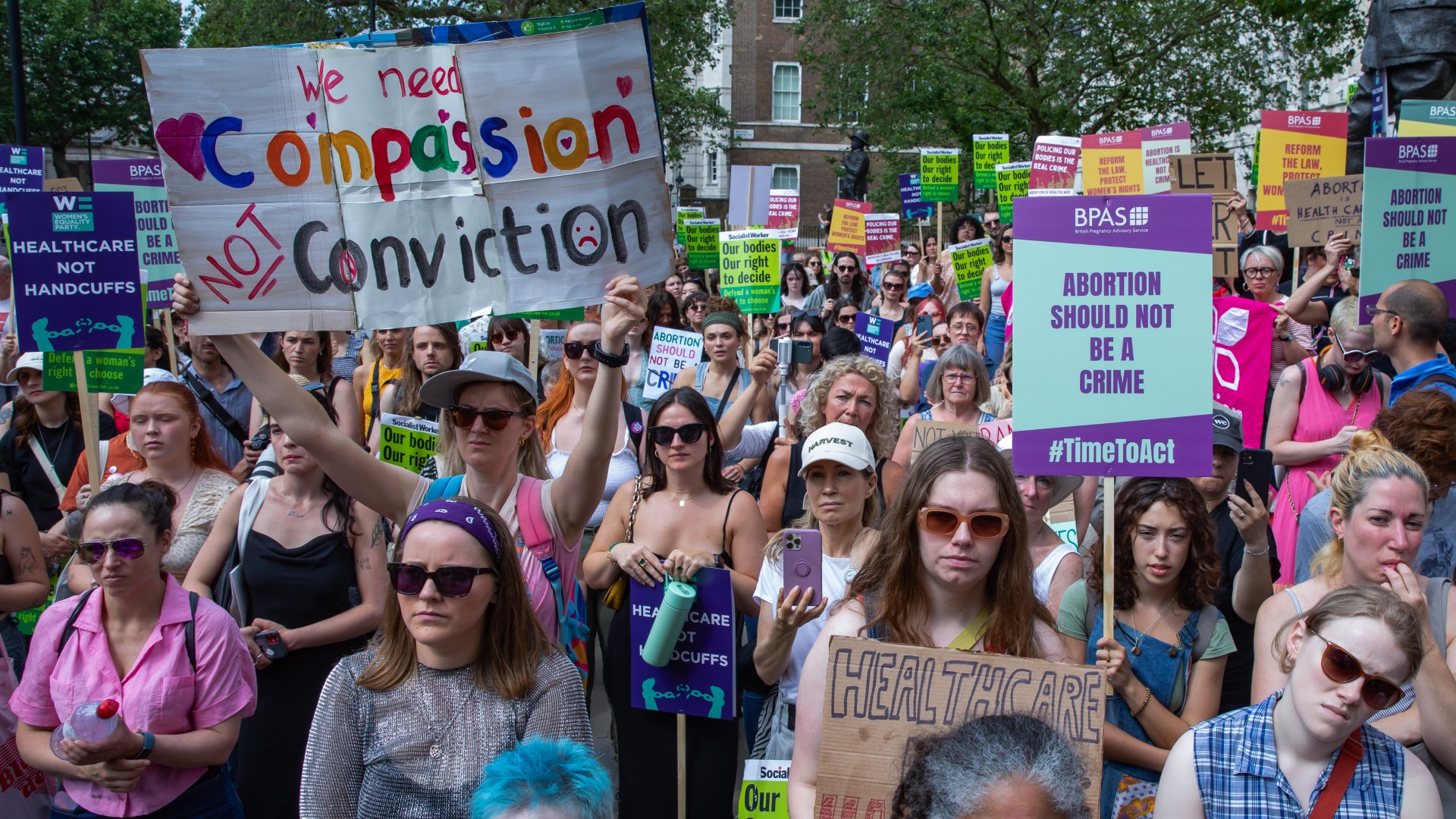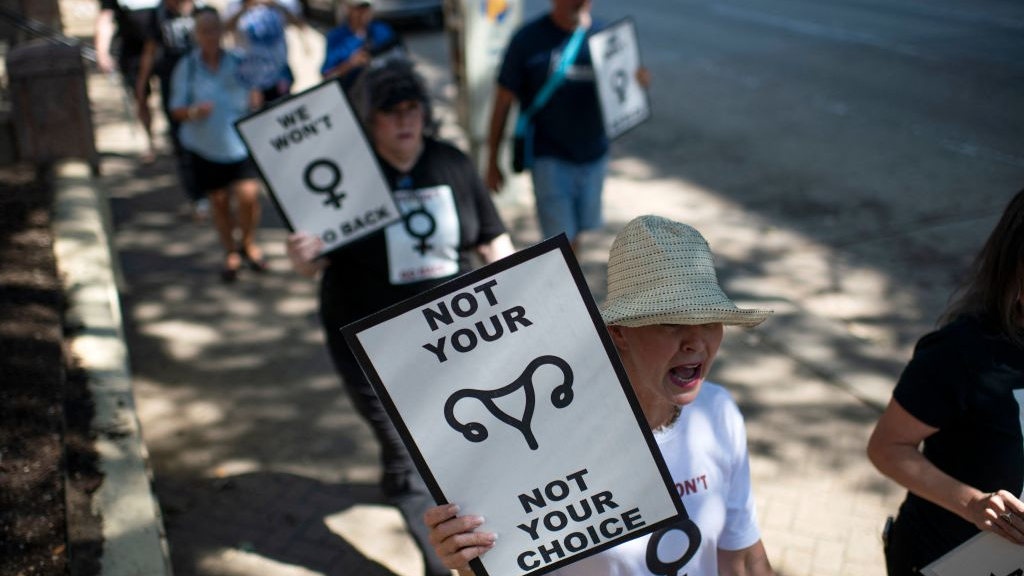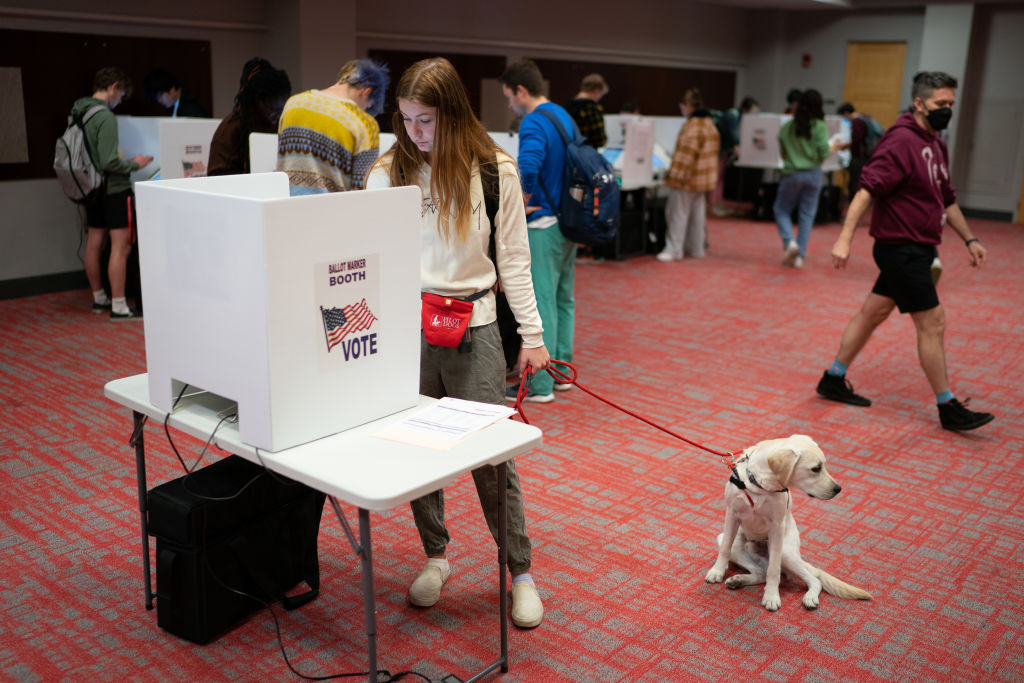Are the Supreme Court's big guns and abortions decisions intellectually consistent?
The sharpest opinions from around the web


The Supreme Court just upended "the most fiercely polarizing issues in American life: abortion and guns," The Associated Press reports. On one day last month, the court's conservative majority expanded the Second Amendment to guarantee the individual right to carry concealed handguns, and the next day, they removed the constitutional right to abortion enshrined for 50 years in Roe v. Wade.
Among the many practical and political questions left in the wake of these two "momentous decisions," AP says, is "whether the court's conservative justices are being faithful and consistent to history and the Constitution — or citing them to justify political preferences." In other words, is there some intellectual constancy in allowing states to ban abortion but forbidding them from regulating guns, or is the court's emboldened 6-3 conservative majority just flexing its newfound ideological might?
The Supreme Court conservatives are being consistent
The conservative justices say they are consistently following a legal philosophy that relies on interpreting the text and original intent of the Constitution's authors to decide today's cases. When it comes to guns and abortion, "I understand how it might look hypocritical, but from the perspective of the conservative majority on the court, it's a consistent approach to both cases," University of Texas law professor Richard Albert tells AP. "I'm not saying it's correct, by the way, but from their perspective, it is completely consistent and coherent."
The Week
Escape your echo chamber. Get the facts behind the news, plus analysis from multiple perspectives.

Sign up for The Week's Free Newsletters
From our morning news briefing to a weekly Good News Newsletter, get the best of The Week delivered directly to your inbox.
From our morning news briefing to a weekly Good News Newsletter, get the best of The Week delivered directly to your inbox.
"We can debate about the meaning of the Second Amendment, but the Second Amendment does explicitly talk about the right to keep and bear arms, whereas the right to abortion access is not explicitly in the Constitution," adds Jonathan Entin, a law professor emeritus at Cleveland's Case Western Reserve University. "If that's where you are going to go, then maybe these decisions are not in such tension after all."
This is might makes right, with originalist trimmings
Sure, "in overruling Roe v. Wade, and with it nearly 50 years of American law, and expanding the reach of the Second Amendment right to keep and bear arms, which is a jurisprudential innovation of more recent vintage, the Supreme Court wants the public to accept that history rules the present" and the Constitution enshrines "rules set in stone that no judge should dare disturb," Cristian Farias writes at GQ. But the truth is that "the high court's ultraconservative majority" made these changes "because they could."
"Even for a constitutional textualist," both of these "rights — to possess a gun in public and to end a pregnancy in private — have some basis in the Constitution," Harvard law professor emeritus Alan Dershowitz writes at The Hill. " And both would seem to allow for some degree of state regulation. The reality is that these decisions, both of which fly in the face of long precedents, are solely a function of numbers," and the conservative justices have them.
And it's important to remember that "the current conservative majority is anything but conservative," Dershowitz adds. "It is a judicially activist majority comprised of justices with agendas. They decide cases more broadly than necessary, and they render decisions depriving the other branches of government of their legitimate powers."
A free daily email with the biggest news stories of the day – and the best features from TheWeek.com
Both decisions protect life
There's no ideological or practical contradictions in the guns and abortions ruling, Rep. Marjorie Taylor Greene (R-Ga.) told Sky News. "Protecting our gun rights give Americans the right to defend themselves, and that protects life, and ending abortion also protects the life of the unborn who can't protect themselves, either."
Both decisions court death
"There's a twisted irony in watching a court with a supposedly pro-life majority hand down a ruling that will almost certainly lead to death," Paige Masten writes at The Charlotte Observer. The handgun ruling "will only put more guns on the streets, and make it harder for states to enact the gun safety measures we truly need." A new study by researchers at Stanford Law School and Duke University found that concealed carry laws boost gun crimes by between 29 percent and 32 percent.
Dobbs, the abortion ruling, will also increase the number of women forced to carry a pregnancy to term, and "more pregnancy means more likelihood of deaths," Rachel Hardeman at the University of Minnesota School of Public Health tells The Guardian. The states with abortion bans already have some of the highest maternal mortality rates in the U.S., which has the highest maternal mortality rate of any developed country.
"If you think about why people get abortions, it's often because it's not safe for them to stay pregnant," Amanda Jean Stevenson at the University of Colorado Boulder tells The Guardian. "The people who are currently having abortions are very likely to actually have higher rates of pregnancy-related deaths and maternal mortality than the people who are currently giving birth." Having an abortion is "much, much, much safer than staying pregnant," she adds, "way, way more than 14 times more deadly to stay pregnant."
The conservative justices are unwavering in ignoring public opinion
Well, "you've got to hand it to the conservatives," at least "when it comes to sticking to their beliefs," Richard Wolf writes at USA Today. "Unlike the lawmakers who inhabit the other two branches, the justices weren't influenced by politics." And neither of "these absolutist decisions," Dershowitz writes at The Hill, will "be popular with a majority of Americans who support both reasonable gun control and reasonable access to abortion."
"The makeup of the court has historically been healthier when it more closely reflects the makeup and views of the American people," Chicago-Kent College of Law professor Carolyn Shapiro tells Reuters. "The court is doing things that I think are dangerous for the country, dangerous for the right of individuals, dangerous for democracy, and dangerous for its continued legitimacy."
"Up until a couple years ago, it used to be the case that where the court fell was well within the lines of the average Americans' positions," Maya Sen, a professor of public policy at Harvard University, tells The Washington Post. "Now we are estimating that the court falls more squarely in line with the average Republican, not the average American."
The justices are underscoring that bans don't work
A final through-line in the guns and abortion decisions are that they highlight the limits of bans. "If banning abortion 'stops abortions,' let's ban guns and stop gun violence," Democratic campaign veteran Jon Cooper tweeted. But few if any abortion opponents believe bans will stop women from terminating their pregnancies, and, as David Freddoso argues at The Washington Examiner, "gun-control laws are big over-promisers."
The American Union of Swing Voters argues that "abortion bans are futile" and "gun bans are futile in an age of 3D printers."
David Frum compares the Supreme Court's abortion decision to Prohibition, both of which, he wrties in The Atlantic, "were and are projects that seek to impose the values of a cohesive and well-organized cultural minority upon a diverse and less-organized cultural majority." And like Prohibition, he argues, abortion bans "can work for a time, but only for a time. In a country with a representative voting system — even a system as distorted in favor of the rural and conservative as the American system was in the 1920s and is again today — the cultural majority is bound to prevail sooner or later."
"Abortion politics is about to transition from being the conservative ideologue's proof of purity to the Republican politician's most vexed and intractable quagmire," From writes. "We may all be surprised at how rapidly the politicians start looking for some escape."
Peter has worked as a news and culture writer and editor at The Week since the site's launch in 2008. He covers politics, world affairs, religion and cultural currents. His journalism career began as a copy editor at a financial newswire and has included editorial positions at The New York Times Magazine, Facts on File, and Oregon State University.
-
 Is the UK about to decriminalise abortion?
Is the UK about to decriminalise abortion?Talking Point A rise in prosecutions has led Labour MPs to challenge the UK's abortion laws
-
 Abortions rise to record level 'due to cost of living'
Abortions rise to record level 'due to cost of living'Speed Read Low-income women face 'heart-breaking' choice, warns abortion charity chief
-
 Italian senate passes law allowing anti-abortion activists into clinics
Italian senate passes law allowing anti-abortion activists into clinicsUnder The Radar Giorgia Meloni scores a political 'victory' but will it make much difference in practice?
-
 France enshrines abortion rights in constitution
France enshrines abortion rights in constitutionspeed read It became the first country to make abortion a constitutional right
-
 Texas judge approves abortion of nonviable fetus, drawing threat from Texas attorney general
Texas judge approves abortion of nonviable fetus, drawing threat from Texas attorney generalSpeed Read Kate Cox petitioned to terminate her doomed pregnancy, salvaging her uterus and the option to try for more children
-
 Ohio voters defeat GOP measure to raise referendum threshold
Ohio voters defeat GOP measure to raise referendum thresholdSpeed Read
-
 Ohio is voting on whether to raise the bar on referendums — and a popular abortion amendment
Ohio is voting on whether to raise the bar on referendums — and a popular abortion amendmentSpeed Read
-
 Abortion law reform: a question of safety?
Abortion law reform: a question of safety?Talking Point Jailing of woman who took abortion pills after legal limit leads to calls to scrap ‘archaic’ 1861 legislation

